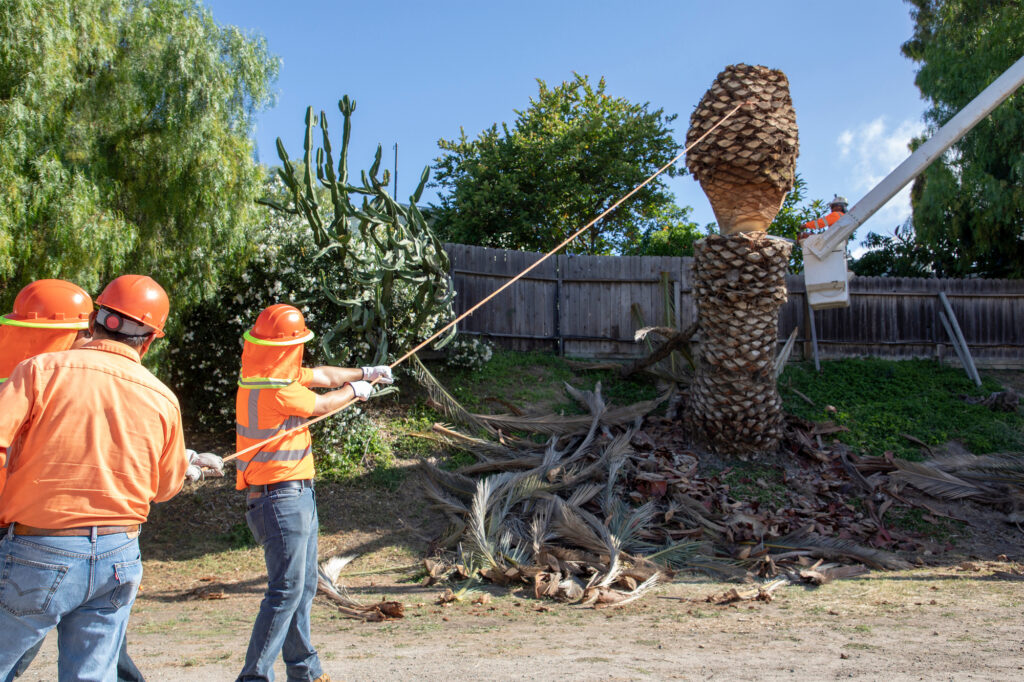There’s something special about a mature tree. It provides cooling shade on hot days, its leaves change color with the seasons, and it becomes part of your landscape. But sometimes, even beloved trees need to be removed for safety or other reasons. Knowing when it’s time to say goodbye to a tree isn’t always easy. However, ignoring the signs that a tree poses a hazard could lead to property damage or injury.
As per research, 78% of tree-related accidents are due to falling trees, limbs, or branches, and the head was the most fatal injury site. Meanwhile, 58% were due to trees being damaged by storms or high-wind events. Thus, if you have a questionable tree on your property, don’t take chances; it’s better to be safe than sorry.
This article enumerates the top five red flags that indicate it’s time to remove your tree. While saying goodbye to your tree isn’t fun, you’ll have peace of mind knowing the risks have been eliminated.
1. Falling or dropping limbs and branches
Have you noticed some sticks and branches on the ground lately when you walk around your yard? Are larger limbs crashing down from your tree, especially after storms? This is one of the most obvious red flags that your tree may be in decline. Dropping branches may indicate that your tree is rotting and decaying on the inside.
As the interior wood rots, branches become unstable and can snap off unexpectedly. Not only does this create a mess in your yard, but large falling branches also pose a serious safety hazard to people, pets, and property underneath. So, don’t brush off dropping limbs as normal – it’s usually a sign of deeper issues. Call the tree service arborist right away if your tree is dropping branches frequently. They can inspect for damage and advise if tree removal is needed before someone gets injured.
2. Hollow and decaying trunk
Take a close look at the trunk of your tree. Do you notice any holes or areas that appear to be rotting? A hollow, decaying trunk is another major red flag and safety hazard. As decay and fungus spread inside the trunk, it greatly reduces the tree’s structural integrity and strength. Just a little rot on the inside can make the entire tree prone to snapping or blowing over in storms.
Also, watch out for mushrooms growing on the bark or out of holes in the trunk, as they usually thrive on decaying wood. A rotting trunk also provides the perfect home for pests like ants, termites, and beetles that will further damage the tree. So, don’t risk keeping a tree with a deteriorating trunk in place. Tree removal is the safest option before it falls on its own.
3. Cracks and splits in the branches or trunk
Did you recently find some long vertical cracks or deep splits in your tree’s branches or trunk? According to studies, a crack that goes through more than half of the trunk indicates a high risk of failure. Cracks expose the interior wood to insects and disease, further destabilizing the tree.
They also act as stress points that worsen with time. Wind, storms, and heavy branches can put pressure on cracks and cause extensive damage. Even a few years ago, you may have dismissed a crack as no big deal. But since then, it has likely deepened and expanded. Splits and cracks won’t repair themselves; they will only get worse. So, it’s better to play it safe and call for tree removal if you spot any major cracks or splits.

4. Leaning or lopsided appearance
Does your once straight and tall tree now appear to be leaning or lopsided? Certified home inspectors say that any tree tilting over 15 degrees from vertical is considered hazardous and should be removed. The uneven appearance of a leaning tree is a clear sign that the roots are damaged or decaying underground. Without healthy roots to properly anchor it down, the tree becomes unstable and at risk of falling over.
The angle of the lean will only get worse over time too as the compromised roots lose their grip. So, don’t wait until the tree is hanging precipitously over your house before taking action. Take the leaning appearance seriously and have the tree removed as soon as possible.
5. Tree roots above ground
Seeing some tree roots push through the soil around your yard might look like a minor nuisance at first. But exposed roots are often a clue that something more serious is going on underground with your tree.
Trees typically only have a small portion of their roots near the surface. So, if you see large visible roots pushing up from the ground, it likely means that the deeper roots down below are congested, choked, or growing in circles. These crowded roots won’t have enough room to spread out properly. They also can’t anchor and support the tree as healthy roots should.
Over time, the roots that can’t expand downward grow outward, lifting your sidewalk, driveway, and lawn. They might even start damaging your home’s foundation. Trimming back the visible roots rarely helps because the real problem is underground, where you can’t see it. So, for safety and to prevent further damage, removing the whole tree is usually the best solution.
Wrap Up
Learning when it’s time to remove a tree can be tough. You get attached to the natural beauty and familiar presence they provide. But don’t let those fond feelings endanger you, your family, and your property’s safety. Acting promptly when you notice these five warning signs can prevent substantial damage down the road.






